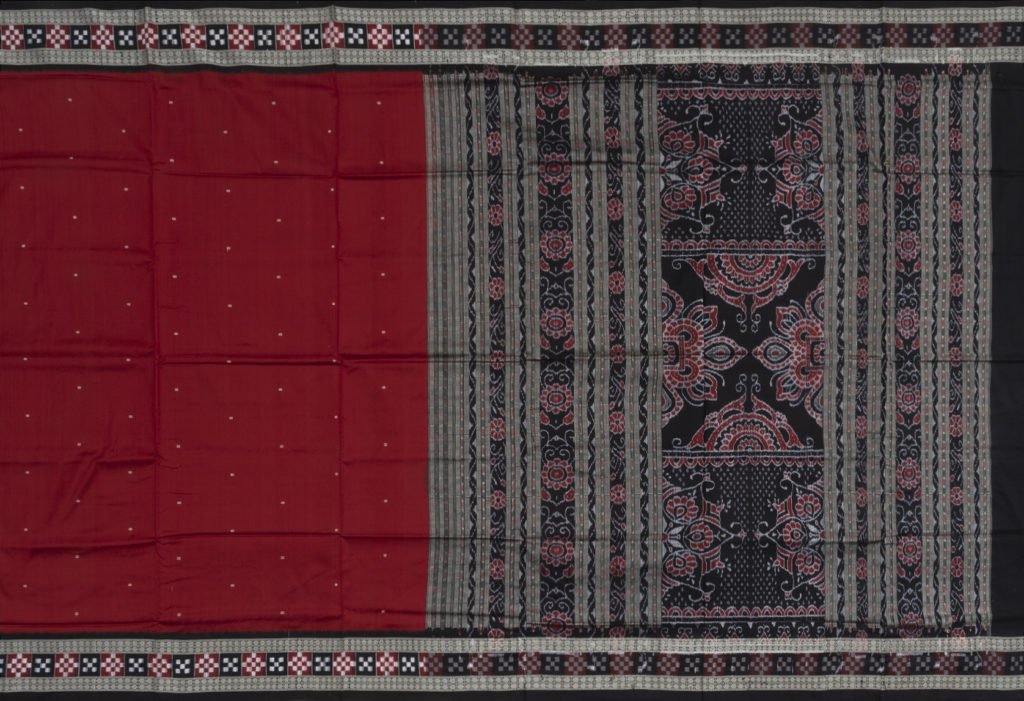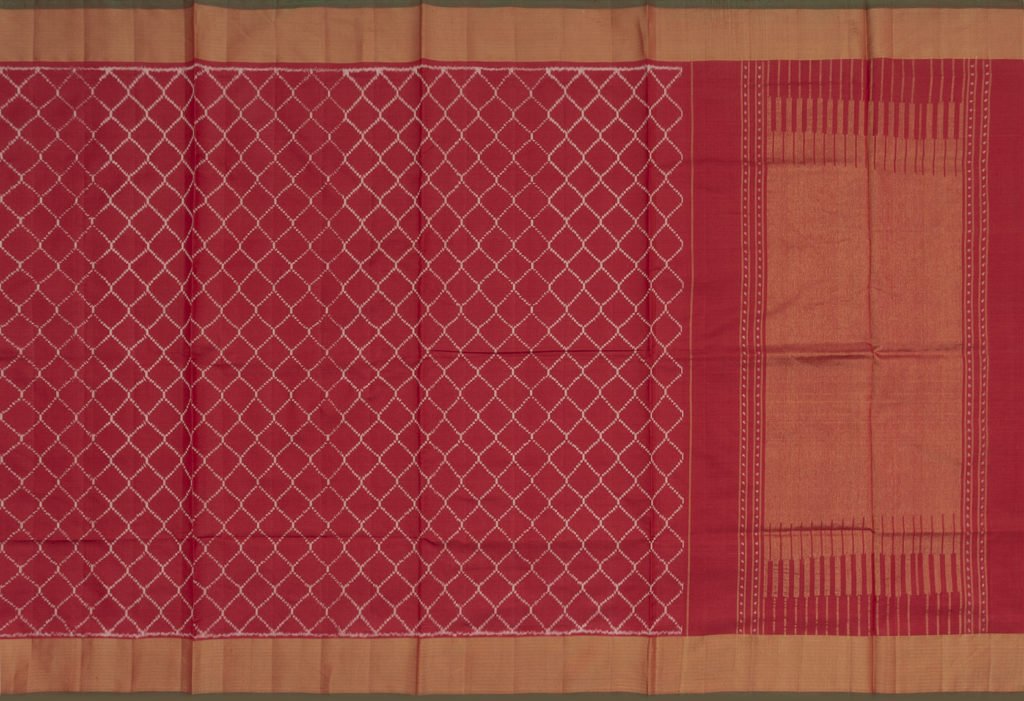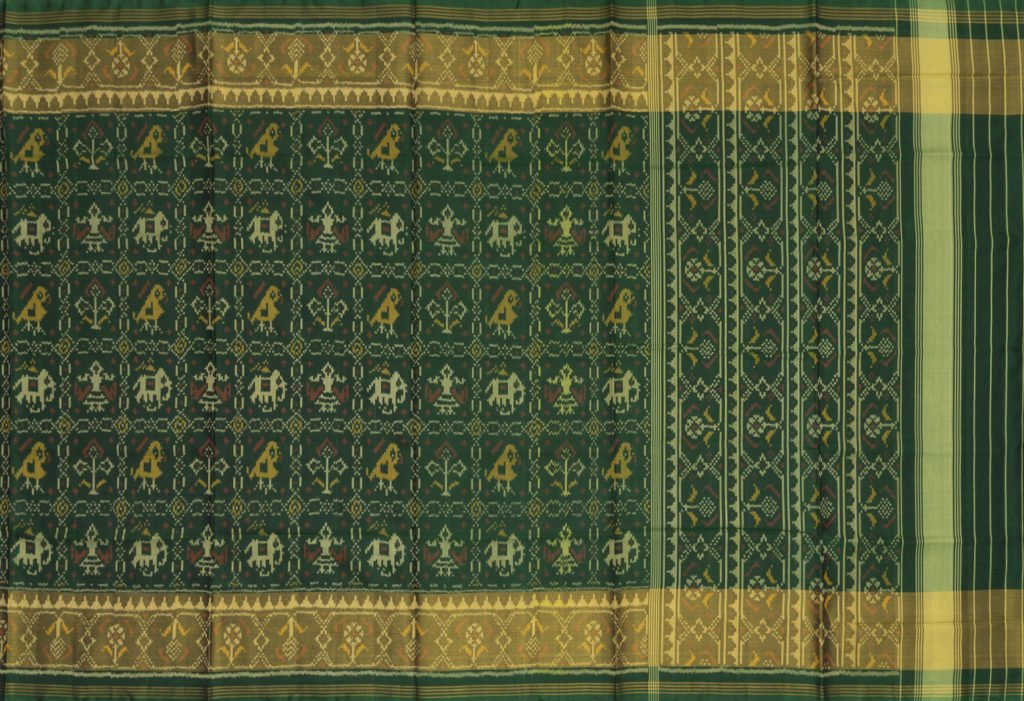Ever since the craft of ikat reached Indian shores, it has been used to create some of the most iconic and beautiful handwoven sarees in our history.
It’s only natural that ikat sarees should be defined by their vibrant colours; after all, ikat is foremost a tie-dye method, its name derived from the Indonesian word ‘mangikat, which means ‘to bond, or tie’.
The ikat technique originated in Indonesia, though its distinctive patterns have since spread from Samarkand to South America through trade. Centuries ago, seafaring merchants must have brought back news and samples of ikat dyeing, and India’s skilled weavers quickly adapted them. As weaving communities migrated across India, they took their craft with them, adapting them to the cultures of their new homes. Yet, even today, ikat weaving is still the stronghold of India’s coastal regions – Odisha, Telangana and Gujarat.
While the core of ikat remains the same, regional variations have flourished. Handwoven ikat sarees from each region have their own design dialects, each of them a joy to decipher.
How are ikat sarees made?
The design of the saree is first plotted on a graph and then marked onto the yarns; these threads are then grouped and tightly bound together using a rubber band or any other waterproof material (called a ‘resist’), so that the dye can colour every part except those that are tied. This is called ‘resist dyeing’ and is done separately for every single colour in the saree!
After dyeing and drying the warp and weft separately, the weaver brings them together on the loom, matching their colours and patterns precisely. The level of skill required to perfectly align the threads is astounding, and takes years to acquire. Often, either the warp or the weft is resist dyed, not both. In this case, the garment is said to have a ‘single ikat’ pattern. When both the warp and the weft are resist dyed, a double ikat pattern emerges. This is quite a complex and time-consuming process, which is why double ikat sarees like Gujarat’s Patan Patola and Telangana’s Pochampally ikat sarees are so coveted.

Where are ikat sarees handwoven?
ODISHA: Called ‘bandha’ in Odisha, ikat sarees are the pride of the state’s weaving tradition.
They are widely inspired by the colours associated with Lord Jagganath – white, black, red and yellow. The famous Sambalpuri ikat saree’s red and black tones are the best-known examples. Another is the Bichitrapuri ikat saree, with signature checkered panels framing intricate patterns.
In fact, Hindu mythology heavily influences ikat motifs in Odisha; one prominent example is the Gitagovinda saree, which contains verses from Jayadeva’s religious text in praise of Lord Krishna. It is exclusively woven in the Nuapatna region of Cuttack, its secrets passed within the weavers’ families alone.
Odisha ikat sarees, which received a geographical tag in 2007, can be woven in either cotton or silk. Single ikat sarees are the speciality of Odisha, and you’ll be able to identify a handwoven ikat saree from Odisha by its blurry, curvilinear lines.

TELANGANA: Ikat is known by the name ‘chitki’ here, which means ‘dot or ‘small’, since the first ikat patterns created here were diminutive.
Villages in the Nalgonda district, where ikat is primarily woven, each have their specialisation; some create single ikat cottons, while others like Pochampally have become famous for double ikat silk and cotton-silk sarees. Puttapaka received a Geographical Indication tag in 2020 for its distinctive telia rumal ikats, in which gingelly oil (tel) is used to soften the yarn before dyeing. Telangana ikats, true to the name ‘chitki’, are more dainty and intricate, and abound in Nature-inspired motifs such as flowers, elephants and birds set against recurring geometric patterns.

GUJARAT: Woven most famously in Patan, Patola sarees are coveted for their double ikat patterns in pure silk. The regions around Rajkot have now begun weaving single ikat Patola sarees as well.
Patolas came to the region because of the Chalukya royals, who often favoured ikat weaves. Ever since, Patan Patolas have been considered a style statement reserved for the elite. Royal patronage elevated the craft, and today, Patan Patolas are perhaps the most complex and refined among ikat sarees; they can often take up to six months to make. Their unfading colours and rich craftsmanship have made them an essential part of the ‘stridhan’ of a Gujarati bride.
Handweaving a Patola saree takes painstaking precision, with measurements sometimes spanning 1/100th of an inch. This results in the sharp lines and finely-detailed patterns that are the hallmarks of a handwoven Patan Patola saree. Natural dyes are used, and it’s said that the colours of a Patola saree won’t fade even after 100 years.

The motifs in handwoven ikat sarees :
The motifs of ikat sarees depend on the region in which they are crafted.
Since Patola sarees are often worn on special occasions or part of a bridal trousseau, auspicious motifs are chosen. Paan bhat (peepal leaf), nari kunjar bhat (woman and elephant motifs), navratna bhat (square patterns) and floral designs are popular choices within the Hindu community. Bohri Muslim patrons prefer abstract Islamic-style patterns, and the multi-hued Vohragaji motifs have been created for them.
Odishan weavers use Nature-inspired motifs, but did you know that each bird and animal carries a deeper, often mythological meaning? The elephant, for example, is reminiscent of ‘gajagamini’ – she who walks with swaying grace and lightness of an elephant; the conch stands in for ‘om’, the coiled serpent cues endless time, and the fish represents the ‘matsya’ avatar of Lord Vishnu. It’s not just Odisha’s ‘Pattachitra’ that’s influenced by sacred texts; its ikat sarees are as well.

In many ways, ikat defies a singular definition. It is not just a weaving method but also a dyeing technique; ikat sarees are handwoven in hyper-local clusters throughout India’s coastal regions, yet their origin can be traced beyond India’s shores. Perhaps, like the multi-faceted patterns that fill it, the ikat saree too is a mosaic of meanings.
———————————

